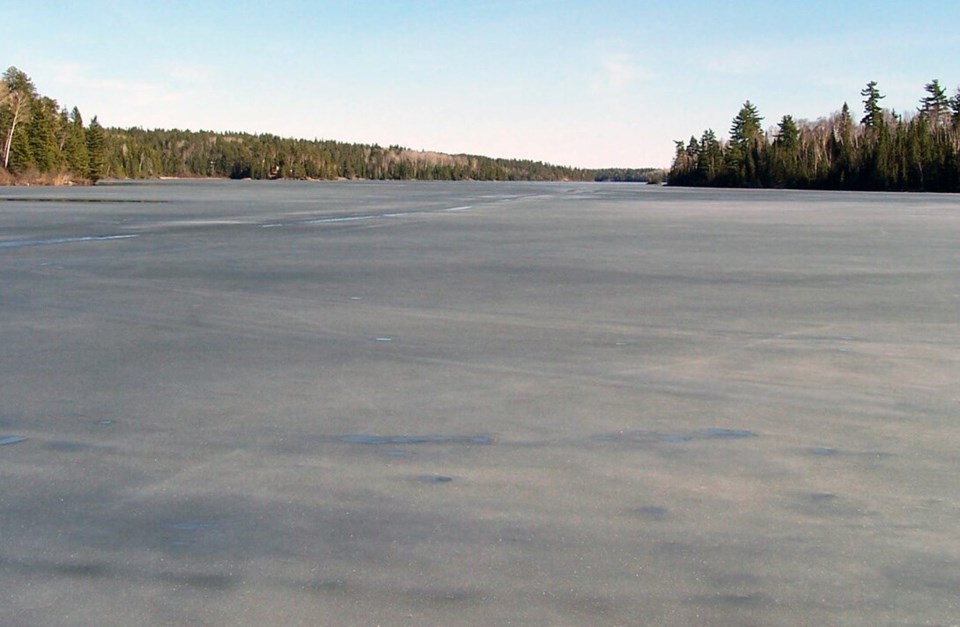THUNDER BAY — Unseasonably mild weather that's left unpredictable ice conditions or even open water on Thunder Bay-area lakes is prompting a note of caution from the OPP.
A police spokesperson warns that no ice can be considered safe, especially this year.
At Lac des Mille Lacs, one of the most popular ice-fishing lakes in the district, the man who manages the access point at Shacks Landing said ice conditions "are really unstable right now."
In an interview Thursday, Ken Wing said "We've got good black ice, but the trouble is we've got a lot of cracks and places I call ridges. The ice is actually expanding and contracting, and it's like a little river running through. It's open water, eh?"
Wing said recent mild weather has compounded the situation.
"We have blowholes starting to form where bubbles come from the bottom and open up holes in the ice. So you've got good ice, but then you've got all these little traps that you don't know about."
He's not encouraging anglers to venture onto the ice at this time, saying, "We don't want anybody to go through."
It's been years since Wing has seen Lac des Mille Lacs in this condition heading into January, and he's also hearing about smaller lakes where trappers are finding it hard to get to their trap-lines.
In the best-case scenario, he'd like to see a cold spell to freeze everything up, followed quickly by a layer of snow, "not too much, just to insulate the ice from the sun, and then some prolonged after that. Then we'd be styling."
In a statement, OPP regional communications officer Autumn Eadie said that given the inherent unpredictability of ice conditions, the public is strongly advised to exercise extreme caution when considering activities on frozen lakes, ponds or rivers.
"It is imperative that individuals ensure the ice is sufficiently thick to support the intended use and to be equipped with essential safety gear, including ice picks," Eadie said.
John Kaplanis, executive director of the Northwestern Ontario Sportsmen's Alliance, agrees that all ice should be considered unsafe, particularly given the thawing that's happened during recent mild weather.
"I always tell people, 'Make sure you check the ice first and have a backup plan...If the ice is breaking apart in one section, generally there's another section that may be nearby where it's a little thicker, and you can use that route to exit the ice.' But certainly, if conditions are questionable at all, I would recommend staying off until we've got consistently cold, freezing weather, especially at night, to stiffen it up," Kaplanis said.
The Ministry of Natural Resources and Forestry notes that ice can be particularly hazardous at the start of the winter season when near-shore ice is often much thicker.
For travelling on foot, the Canadian Red Cross recommends an ice thickness of at least 15 cm or 20 cm for larger groups such as skating parties.
It says at least 25 cm is required for snowmobiles and ATVs.
According to Destination Ontario, a minimum of 30 cm of ice is recommended for driving on ice in a light vehicle.
